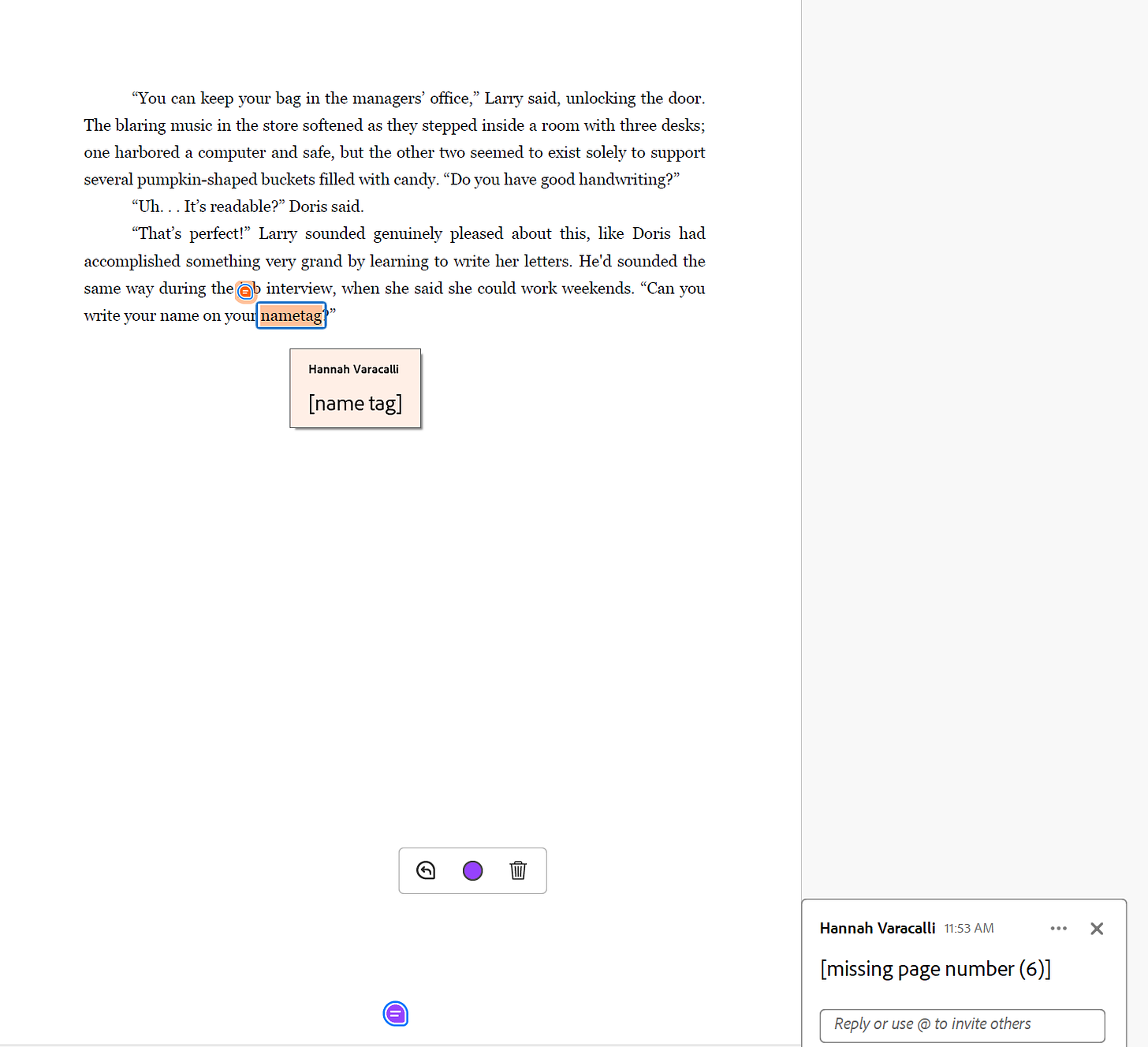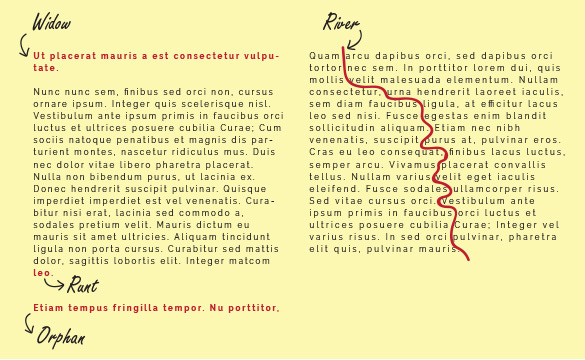A Copyedit Versus a Proofread: What's the Difference?
Demystifying the editing process
Proofreading is easier than copyediting. Proofreading is the same as copyediting, but it’s cheaper. Proofreading is “light” copyediting. I have a great grasp of grammar so my book just needs a proofread.
I regularly see confusion regarding proofreading versus copyediting from both writers and aspiring/new editors. Even though the differences are very clear-cut, I myself had a hard time keeping them separate in my head when I was undertaking editorial training. So here’s a quick explanation and a debunking of common misconceptions.
What Is Copyediting?
Copyediting comes fairly late in the editorial process. After a manuscript has been completely written and edited for content, structure, and other big-picture elements, it’s passed along to a copyeditor for small-picture edits. Small does not mean unimportant. Copyediting can include:
Correcting spelling, grammar, and punctuation errors
Ensuring consistency in stylistic decisions (Is it Mr. Grey will see you now or Mr. Gray will see you now? Are Oxford commas used or not? Etc.)
Fact-checking
Flagging potential copyright violations/checking that quotes are used with permission, etc.
Confirming that quotations from outside sources have been accurately transcribed and cited
Ensuring names are spelled accurately (whether the names of fictional characters or, in nonfiction, cited scholars and interviewees, etc. I will also make sure a writer spelled their spouse’s name correctly in the acknowledgments!)
Editing or (re)writing full bibliographies
Ensuring tone is consistent and impactful (Does the research article sound appropriately formal? Does the prose in the novel flow smoothly? Does the teenage character’s dialogue sound authentic, or does it sound like Steve Buscemi going How do you do, fellow kids?)
In fiction, checking for consistency in time line, character details, plot, etc.
Making content suggestions on the paragraph level (A common one for fiction is: The main character’s name isn’t revealed to readers until page 57—maybe it’s better to put it on page 1 here. For nonfiction: This research is now outdated; do you want to add new information in this paragraph? Here are two recent research papers you can consider citing.)
And more.
Edits are most typically done via Microsoft Word, with questions and suggestions (both referred to as queries) being made with Word’s comments feature.
Here’s an example of a copyedit:
What Is Proofreading?
Proofreading comes after a book has been fully copyedited and formatted. These days, it’s most often done via Adobe Acrobat. While a copyeditor might make an edit directly in the manuscript (usually keeping Track Changes on so the author can see which edits were made), the proofreader adds markups to PDF files.
Proofreading checks for things like:
Widows, orphans, runts, and rivers (read definitions of these typesetting errors here)
Tight/loose kerning (spacing between letters and words in a text)
That page numbers are correct/not missing
Objective errors that the copyeditor missed (does not include fact-checking, content suggestions, or major changes that necessitate rewriting whole lines)

That Book Doesn’t “Just Need a Proofread”
As you can see, these processes are quite different.
Many self-publishing authors try to hire proofreaders without having their book copyedited—usually because they think their book only needs a “light” copyedit (which, as you can see, is not what a proofread is) and because the service is often cheaper than copyediting.
Often, an editor will be able to help an author gain perspective on what their manuscript needs in terms of editing.
However, if an author tries to pass off an unedited manuscript as being ready for proofreading, a qualified editor will see that this is not the case once they start to read the manuscript. The editor will then need to redefine the scope of the editing project, expanding it to a copyedit and sending a new quote for the service, or the editor may cancel the project altogether.
Proofreading Is Not Easier Than Copyediting
This is a misconception I see early-career/aspiring freelancers make: That proofreading is somehow easier than copyediting, and therefore they might try proofreading as a way to ease into editorial work or as a simple way to make quick money.
But here’s the truth: Proofreading requires the same knowledge and skillset as copyediting. You need to have just as deep an understanding of the style guide(s) as the copyeditor because you’re checking for the same errors. You need to have the same skill in writing queries that are easy/quick to read, professional in tone, and clear in intent. You need to read every single word of the manuscript, just like the copyeditor must. You need to have the same ability to follow a systematic process/checklist. And you need additional skills, too: some knowledge of typesetting and Adobe Acrobat.
Proofreading is not easier than copyediting. It is slightly more limited in terms of scope, so you might proofread a book faster than you’d copyedit it (then again, you might not), but it is not easier.
Also, it’s no easier to get proofreading jobs than it is to get copyediting work. It’s the same folks at the same publishing houses who hire freelance copyeditors and proofreaders, they give out similar tests for both, the hiring process is essentially equivalent, and you’re no more likely to be taken on as a proofreader than you are as a copyeditor. (When you are added to a freelancer pool, you’re often hired for both kinds of jobs, although you won’t be assigned as both the copyeditor/proofreader for the same book.)
Proofreading often pays less than copyediting. I don’t know why this is beyond arbitrary budgetary limitations, as my time does not become less valuable when I am proofreading. I remain the same person using the same knowledge, experience, and skills, and my living expenses are just as high when I’m proofreading.
Can Self-Publishing Authors Hire the Same Editor to Copyedit and Proofread?
I don’t recommend this. As you can see above, part of the proofreader’s job is to catch errors the copyeditor missed. Fresh eyes are important for that last pass.
(I wrote about how to choose an editor here.)
Why I Don’t Offer Proofreading Services to Self-Publishing Authors
All of the self-publishing authors I’ve ever worked with have had limited budgets to spend on editorial services. Yes, it would be wonderful if they could afford to hire each of the editorial professionals that a publishing house provides: a developmental editor, copyeditor, typesetter/formatter/designer, and proofreader. But this doesn’t typically make financial sense.
For those deciding which editorial services to spend money on, I recommend developmental editing and copyediting. A good developmental editor will help ensure that readers enjoy your book, and a copyeditor will make sure it’s immersive and has minimal glaring errors. Will some typos remain after a copyedit? Yes, but readers can be forgiving. A proofread is nice, but particularly for fiction, I don’t consider it a necessity.
Additionally, the self-publishing authors I’ve worked with have been go-getters. They’ve typically taught themselves the basics of formatting and have been well-prepared to check for issues like inconsistent kerning.
(A couple of self-publishing authors who’ve had well-designed books have recommended the video below.)
In short: I don’t offer proofreading to authors because I don’t think they need it (and most folks understandably don’t quite know what it is).
Some freelance editors may offer proofreading to self-publishing authors, and some authors may want it. That’s fine. As H. G. Wells once wrote to James Joyce, “The world is wide and there is room for both of us to be wrong.”
Different Perspective?
Do you have a different opinion or editorial experience to share? Feel free to expand the conversation (from one of me muttering to myself in public) in the comments.
Until next time,
Hannah Varacalli
Copy & Developmental Editor
www.hveditorial.com







That’s a distinction I was aware of, but I didn’t connect it to the different terms used.